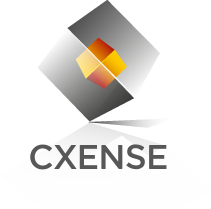‘The One Decision That Leads to a Publisher’s Demise’ by Ian Jenkins, VP Sale Enablement, Cxense
by Romany Reagan on 30th Aug 2013 in News


To paraphrase an old saying, we can choose what decisions we make, but not the consequences. It’s time for the publishing industry to wake-up and see the decision that’s causing their demise.
As publishers flounder, ad agencies, as well as ad networks and other intermediaries, have blossomed. Why? In the digital space, the key resource to control and use to fuel a successful business model is audience data. Partnerships with these middlemen, although possibly rewarding in the short-term, leave publishers blind and behind the curtain to serving their own readership.
Most publisher websites treat readers the same—a one-size-fits-all experience. It’s no surprise when they have outsourced key services such as ad targeting and content recommendations to various ‘partners’. Outsourcing critical activities that drive personalisation leaves precious audience insight in the hands of agencies and intermediaries (aka partners).
The single decision that tips the future in digital publishing is who controls and leverages audience data. If publishers are serious about moving from ‘survive to thrive’, they need to reclaim control of their primary asset, namely audience data; but how does control of audience data lead to a thriving publisher? Here are the three steps to follow:
Learn or churn
First, focus on discovering deep insights about your visitors. Do you understand their behaviours, intentions, context and demographics when visiting your site? Can you describe how these differ between your subscribers, potential subscribers and non-subscribers? The ability to distinguish between individual visitors and match them to one of the three profiles becomes the first step to capitalising on audience data.
Audience data is often referred to as ‘Big Data’, however it’s only useful when it tells a story. Surfacing the story was once limited to customer segments and personas, however as IBM’s CEO Ginni Rometty recently stated, “The shift is to go from the segment to the individual. It spells the death of the average customer.” Unlike traditional offline publishing, digital publishing is anchored in designing one-of-a-kind experiences. However, this requires knowing your visitors better than your partners.
Fueling the ‘will to pay’
The next step bridges your visitors with the content that interests them. For many years, publishers have offered basic and premium content online for free. However, some publishers are reversing this strategy, with The Telegraph being one of the latest examples in the UK. Although much has been written about creating publisher paywalls, less is known about fueling the ‘will to pay’. When readers expect content for free, what is your strategy to create a ‘will to pay’?
The recipe for building the ‘will to pay’ requires blending audience insight, content targeting and continuous optimisation. Understanding which content pulls potential subscribers over the paywall is as important as knowing who your visitors are. When content and audience profiles are paired together to create personal experiences, visitors become more engaged with publishers. The increased engagement presents opportunities to launch new business models and achieve just the right blend of free and premium content.
Put the premium back into your ad prices
Publishers are often approached by ad networks and ad exchanges. The goal is to open up the publisher ad inventory for various forms of automated buying. For example, RTB may appear as an attractive solution for a publisher’s unsold inventory, however, recent experience from well-known European brands shows a decline in their overall advertising revenue.
Why? Prices and fill rates from RTB providers are lower than anticipated and the fallout results in price pressure for the premium ad inventory sold by the publisher sales force. What alternatives do publishers have? It starts with the most important principle guiding a publisher’s decisions, control.
News Corp recently made a bold move to launch its very own programmatic ad exchange. After feeling the pressure of content becoming commoditised and its audience being aggregated by third parties, News Corp put a stop to harmful partnerships. As Chief Executive Robert Thomson said, “Third parties are no longer invited to the party." Regaining control of your audience information allows publishers a charge higher ad prices and become a premium advertising destination again.
The journey, one step at a time
Controlling audience data is the first step to discovering deep insights about your audience. These insights will transform ad and content personalisation. With continuous tuning of ad and content activities, publishers will create opportunities to thrive. In the end, he who owns and leverages the audience data, decides the future. Who controls your future?
Ian Jenkins is VP of sale enablement at Cxense.







Follow ExchangeWire